Chittagong garment factory fire 2025
Chittagong garment factory fire 2025 .On 16 October 2025, a major fire broke out at Adams Caps & Textile Limited — a garment factory in the Chattogram Export Processing Zone (CEPZ), Chittagong (also known as Chattogram). The blaze reportedly started around 2:00 pm and quickly spread across multiple floors of the eight-story building, affecting warehouse zones and production floors.
Firefighting units — 16 from Fire Service & Civil Defence and support from the Bangladesh Navy — were deployed to contain the blaze. Officials say that flammable materials stored in upper floors fueled the fire, complicating suppression efforts. At present, casualty numbers remain unclear, but the damage is significant, and the incident has reignited concerns over industrial safety in Bangladesh’s garment sector.
This article examines all known facts, the industrial safety landscape, impact on workers and industry, gaps in enforcement, and possible reforms.
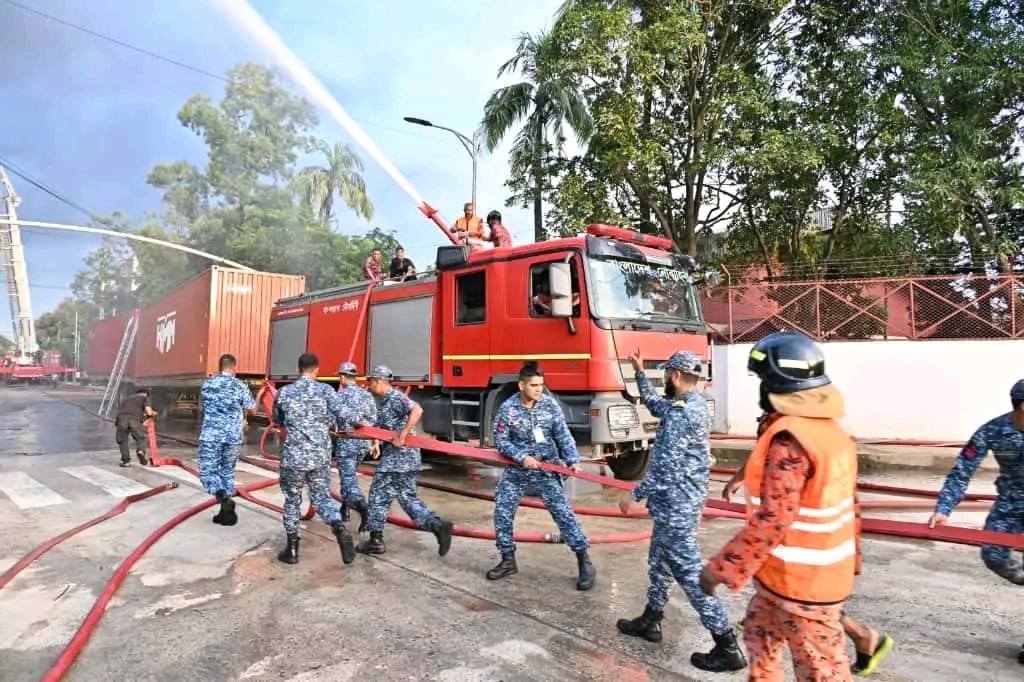
Chittagong garment factory fire 2025
Location & Factory Profil
Factory name: Adams Caps & Textile Limited
Location: CEPZ, Chittagong Export Processing Zone, Chattogram, Bangladesh
Building: Eight stories; fire reported on 5th, 6th, 7th and possibly 8th floors.
Workers: The factory reportedly employs ~500 workers in normal operations.
Warehouse zones: Some upper floors are reportedly used for chemical or raw materials warehousing.
Fire Outbreak & Spread
The fire reportedly began at around 2:00 PM in upper floors and quickly spread downward.
Flammable materials stored in the building’s upper floors (warehouse of textiles, chemicals, raw materials) were cited as key contributors to the rapid spread.
Fire Service officials faced challenges in containing the blaze due to combustible materials, limited access, and smoke.
According to Observer and BSS, some upper floors had no workers present at the time, indicating that storage zones rather than production floors were heavily involved in the blaze.
Response Efforts
Over 15 units from Fire Service plus 3 units from Bangladesh Navy were mobilized.
Border Guard Bangladesh and local administration also responded to support rescue and perimeter security.
Authorities say the fire has been “mostly controlled” by late afternoon, though smoke and hotspots remain. bdnews24.com+2Dhaka Tribune+2
No confirmed death toll yet; preliminary reports say workers were evacuated safely in many cases. bdnews24.com
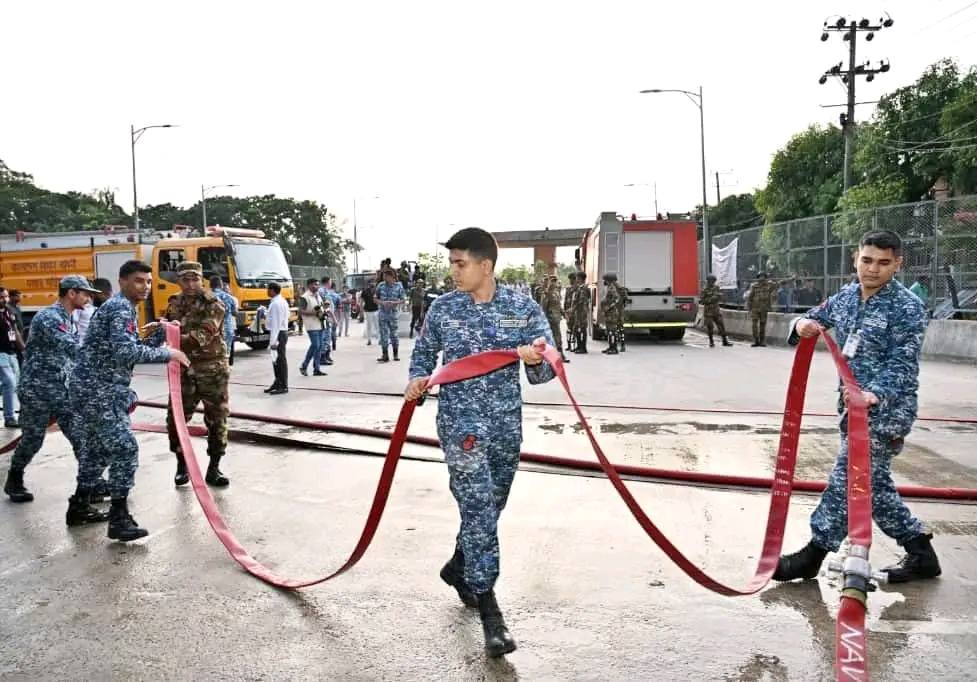
Chittagong garment factory fire 2025
Human & Worker Impact
While no confirmed casualties have been reported from the Chittagong fire as of the latest updates, potential injuries from smoke inhalation or burns remain a serious concern.
Even in safe evacuations, trauma, loss of wages during work stoppage, and health risks from toxic smoke are immediate risks to workers.
Economic & Industry Effects
Disruption of production lines, damage to machinery, raw materials loss, and structural damage in the factory will impose financial burdens on the factory owner and supply chain.
Downstream effects: suppliers, subcontractors, exporters may face delays, contract breaches, or loss of client confidence.
The reputational impact: international buyers and brands may reconsider sourcing or demand stricter audits or safety assurances Chittagong garment factory fire 2025.
Safety & Regulatory Spotlight
The fire signals ongoing gaps in fire safety enforcement in industrial zones, especially EPZs.
Chemical and textile storage in production buildings amplify risks when not segregated or regulated properly.
Locked doors, narrow escape routes, or inadequate building design can turn surface fires into lethal disasters Chittagong garment factory fire 2025
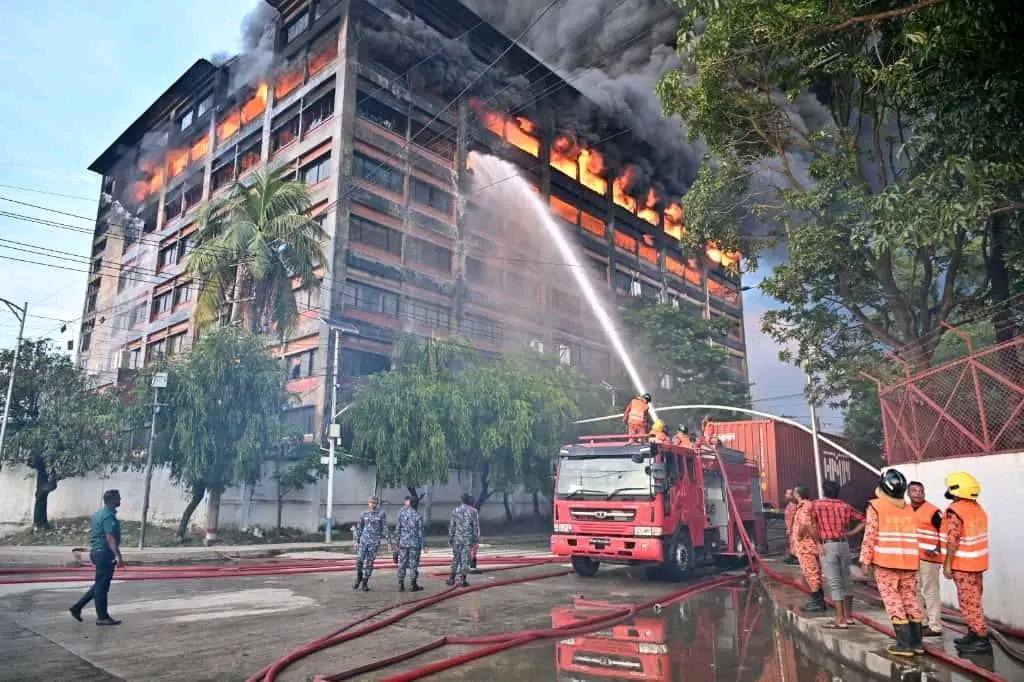
Why Chittagong? Unique Factors & EPZ Challenges
Chittagong, as Bangladesh’s major industrial and port hub, hosts many Export Processing Zones (EPZs). These zones often benefit from special regulatory arrangements. But that also brings challenges:
High density of factories leads to limited spacing and overlapping risk corridors.
Warehouse cum production usage — many floors used for both operations and storage.
Regulatory oversight complexity in EPZs — sometimes multiple authorities (BEZA, EPZ authority, local fire services) share oversight
Access challenges in built up zones may hamper firefighting Chittagong garment factory fire 2025.
Flammables & chemical stockpiles in upper floors (textile chemicals, plastics, dyes) increase ignition and spread risk — as cited in this very fire.
In short, EPZs are industrially lucrative but prone to elevated risk unless safety infrastructure is uncompromising.
Comparisons & History: Past Industrial Fires in Bangladesh
The 2025 Chittagong fire must be understood in the shadow of past catastrophes:
Rana Plaza collapse (2013): Over 1,100 workers died when a multi-factory building collapsed — a defining moment in global awareness of Bangladesh garment safety.
Tazreen factory fire (2012): At least 117 died in one of the deadliest garment fires in the country’s history.
Sitakunda container depot fire (2022): 47 killed in a massive fire and explosion in Chittagong District.
These events led to regulatory reforms (e.g. Accord, safety audits, building code revisions), yet recurrence continues, indicating implementation and enforcement gaps Chittagong garment factory fire 2025.
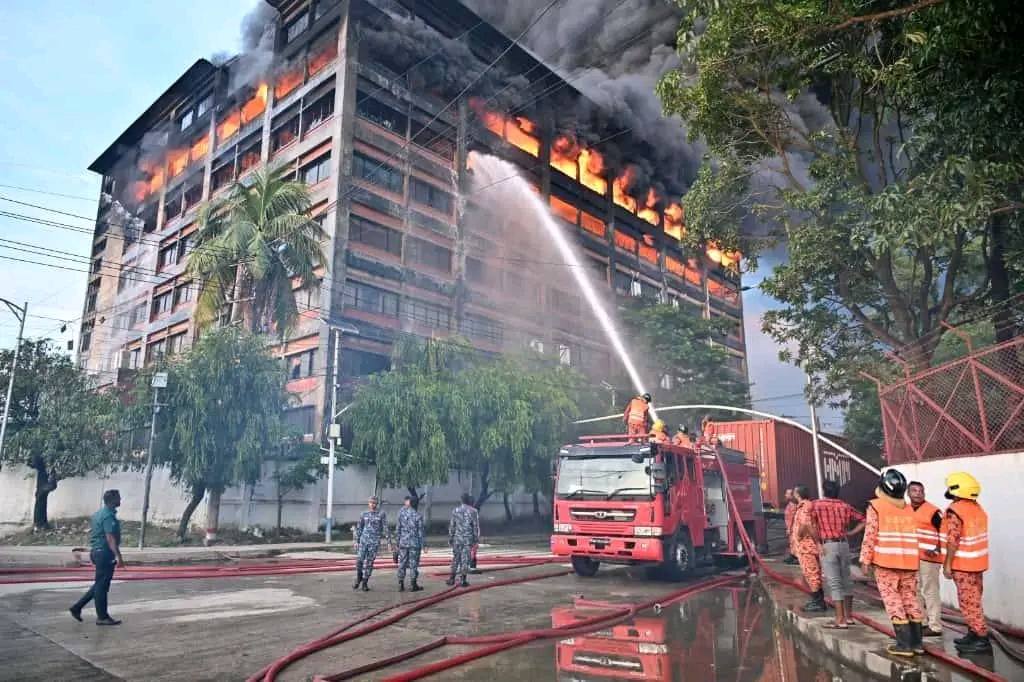
Root Causes & Safety Failures
Drawing from available reports and patterns, probable failure factors include:
Unsafe storage of flammable materials above active spaces.
Inadequate fire separation between production areas and chemical warehouses.
Poor building design or modifications without safety oversight.
Lack of emergency exits or locked escape routes — locks or barred doors preventing quick evacuation.
Weak enforcement of safety certifications/licensing — uncertainty whether warehouse had proper permits.
Absence or non-compliance of fire suppression systems (sprinklers, fire doors, alarms) or their malfunction.
Delayed response or coordination lapses among firefighting agencies, EPZ authority, and rescue services.
Government & Stakeholder Response
Government & Authoriti
Local authorities have launched investigations to identify the cause, responsible persons, and whether safety norms were violated.
Fire Service officials have publicly noted that flammable materials hindered suppression and that warehouse safety licensing status is unclear.
The EPZ authority and industry regulators may be asked to suspend operations, audit safety compliance, or impose penalties on the factory owners Chittagong garment factory fire 2025.
Industry & Buyer Reactions
Buyer brands sourcing garments may demand audits, supply chain inspections, or safety guarantees from factories.
Some buyers may temporarily suspend orders or request relocation of production to safer facilities.
Industry associations might call for stricter safety enforcement, training, and implementation of standards.
Public & Media Reactions
The media will likely spotlight safety lapses, enforcement failures, and demand accountability.
Labour rights groups and NGOs will push for stronger regulatory reforms, compensation for affected workers, and safety guarantees Chittagong garment factory fire 2025.
Public pressure may force government to act more decisively and transparently.
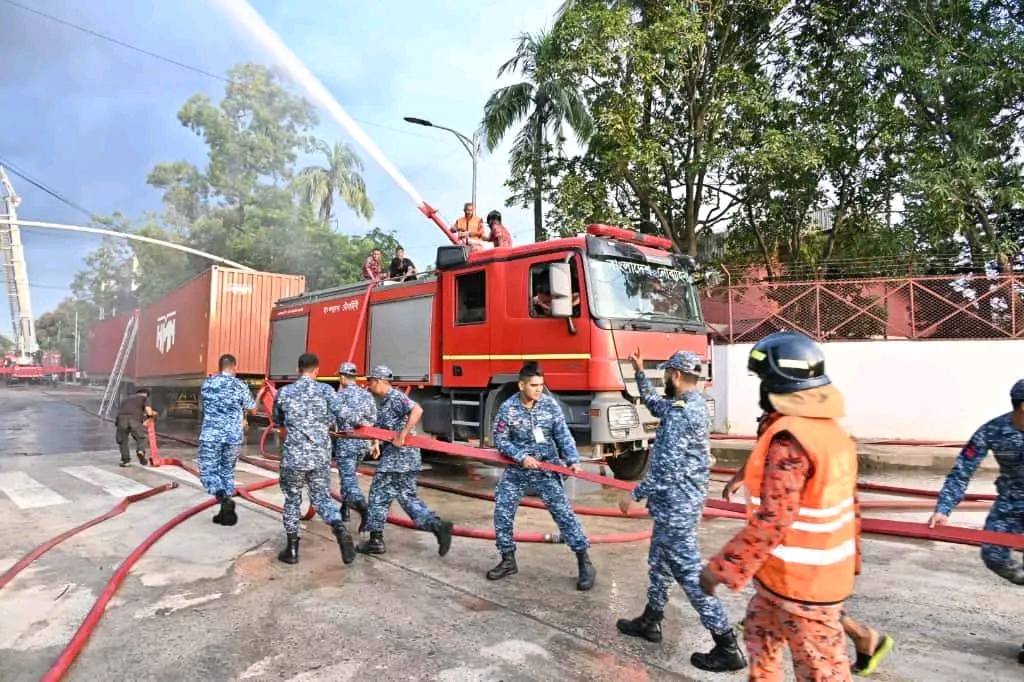
Policy Implications & Safety Reforms
To prevent recurrence, systemic reform is needed in these domains:
Stricter Building & Fire Codes Enforcement
Ensure EPZ factories comply with international fire safety standards (exit routes, fire separation, signage, suppression systems).
Regular inspections by independent agencies, not merely factory self-certification.
Chemical Storage Regulation
Segregate chemical warehouses from production floors with fire barriers.
Enforce licensing and safe storage protocols for flammable substances.
Evacuation & Emergency Preparedness
Mandate multiple unobstructed escape routes, emergency lighting, drills, regular maintenance.
Prohibit locking of exit doors or grill bars on stairs.
Capacity Building & Training
Fire safety training for workers, managers, EPZ authorities.
Awareness of hazard recognition, quick evacuation, fire alarms.
Integrated Rescue & Fire Coordination
Strengthen coordination among Fire Service, local police, EPZ authority, navy, BGB in industrial zones.
Pre-planned emergency protocols, drills, resource allocation.
Legal Accountability & Penalties
Hold factory owners, management, regulatory officials accountable in cases of negligence or corruption.
Transparent public reporting of investigations and sanctions Chittagong garment factory fire 2025.
Insurance & Compensation Mechanisms
Require industrial insurance covering fire losses, worker injury or death.
Guarantee prompt compensation and medical support for affected workers.
Supply Chain Oversight by Global Brands
International buyers should enforce stricter audit and compliance policies, not just for first-tier factories but downstream suppliers Chittagong garment factory fire 2025.
Incentivize factories to invest in safety upgrades via long-term contracts, premium pricing, or safety-linked bonuses Chittagong garment factory fire 2025.
What to Monitor Next
Casualty & Injury Reports: Confirmation of death toll, injured counts, missing workers.
Investigation Findings: Causes identified, responsible parties, license status.
Regulatory Action: Shutdowns, fines, factory license revocations.
Supply Chain Responses: Buyers’ reactions, order cancellations or relocations.
Worker Voices & Compensation: Demands for fair pay, medical care, support.
Media & Public Oversight: Transparency of inquiry, official accountability.
Policy Shifts: Proposed safety legislation or EPZ authority reforms.
Frequently Asked Questions (FAQs)
Q1: When and where did the Chittagong factory fire occur?
A: The fire started around 2:00 PM on 16 October 2025 at Adams Caps & Textile Limited, in the CEPZ, Chittagong (Chattogram) Chittagong garment factory fire 2025.
Q2: What caused the fire?
The exact cause is under investigation, but officials have cited the presence of flammable materials stored in upper floors and that chemical storage zones accelerated the blaze.
Q3: Were there casualties?
As of now, no confirmed deaths have been reported from this Chittagong fire incident; workers were reportedly evacuated safely.
Q4: What challenges did responders face?
Firefighters faced intense fire spread due to combustible materials, difficulty accessing upper floors, smoke and hazardous fumes, and coordination in a multi-agency environment.
Q5: How is this similar or different from past factory disasters?
Like past incidents (Rana Plaza, Tazreen), safety lapses, improper design, overloaded structures, lax oversight, and chemical hazards are common factors. The difference here is its location in CEPZ and storage usage in upper floors Chittagong garment factory fire 2025.
Conclusion
The Chittagong garment factory fire 2025 is a stark reminder that despite reforms and reforms after past disasters, Bangladesh’s industrial safety system remains fragile. While this fire may not (yet) match the human toll of Dhaka’s 2025 fire or historic tragedies, its occurrence in a key industrial zone underscores systemic risks.
For Bangladesh to sustain its position as a global garment hub with ethical reputation, safety must no longer be optional. The lessons from this blaze must translate into action: rigorous enforcement, accountability, cross-actor collaboration, and a safety culture integrated into industrial growth.
If you like, I can pull together a data table summarizing recent major factory fires in Bangladesh (location, death toll, causes) to illustrate trends and context Chittagong garment factory fire 2025.
